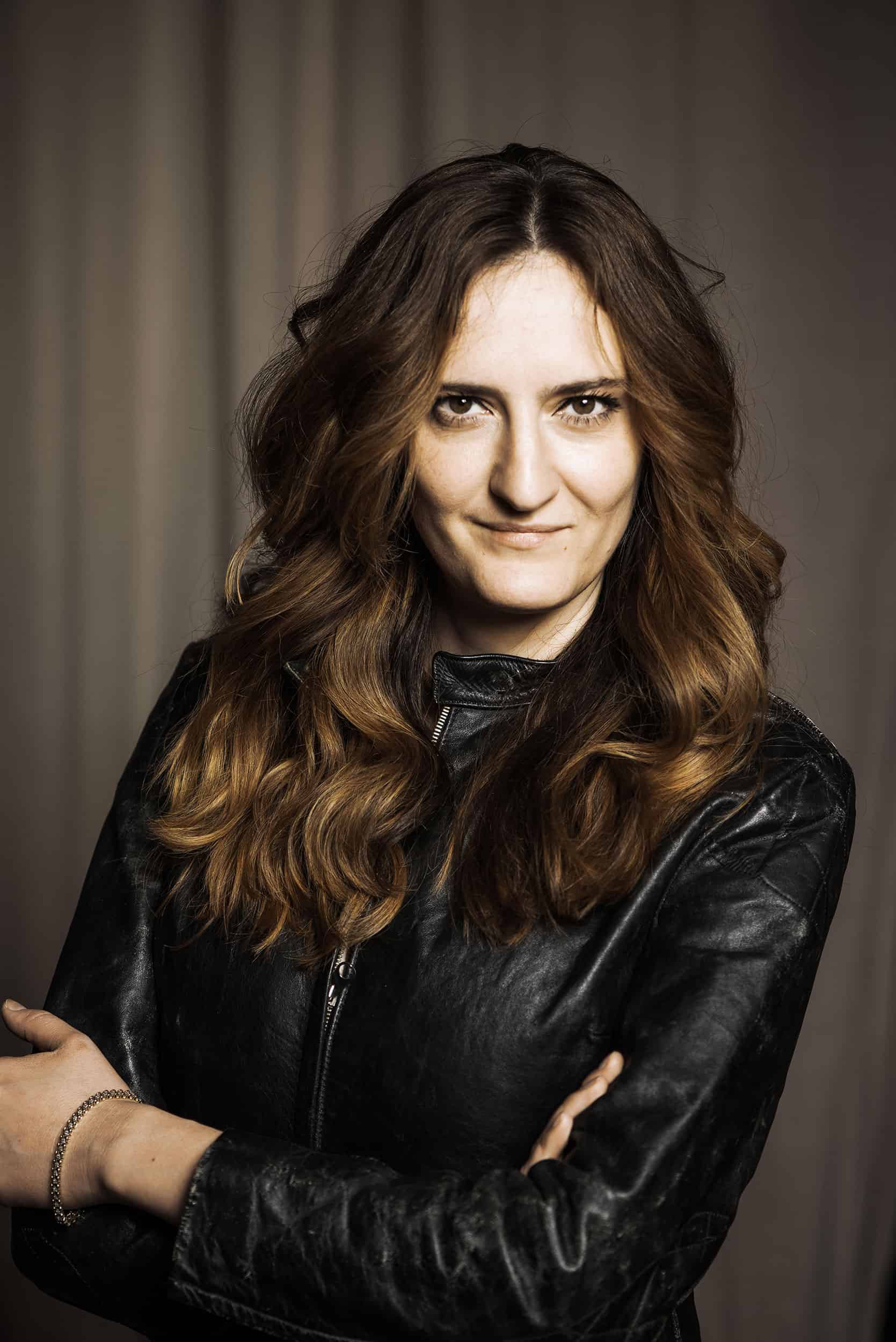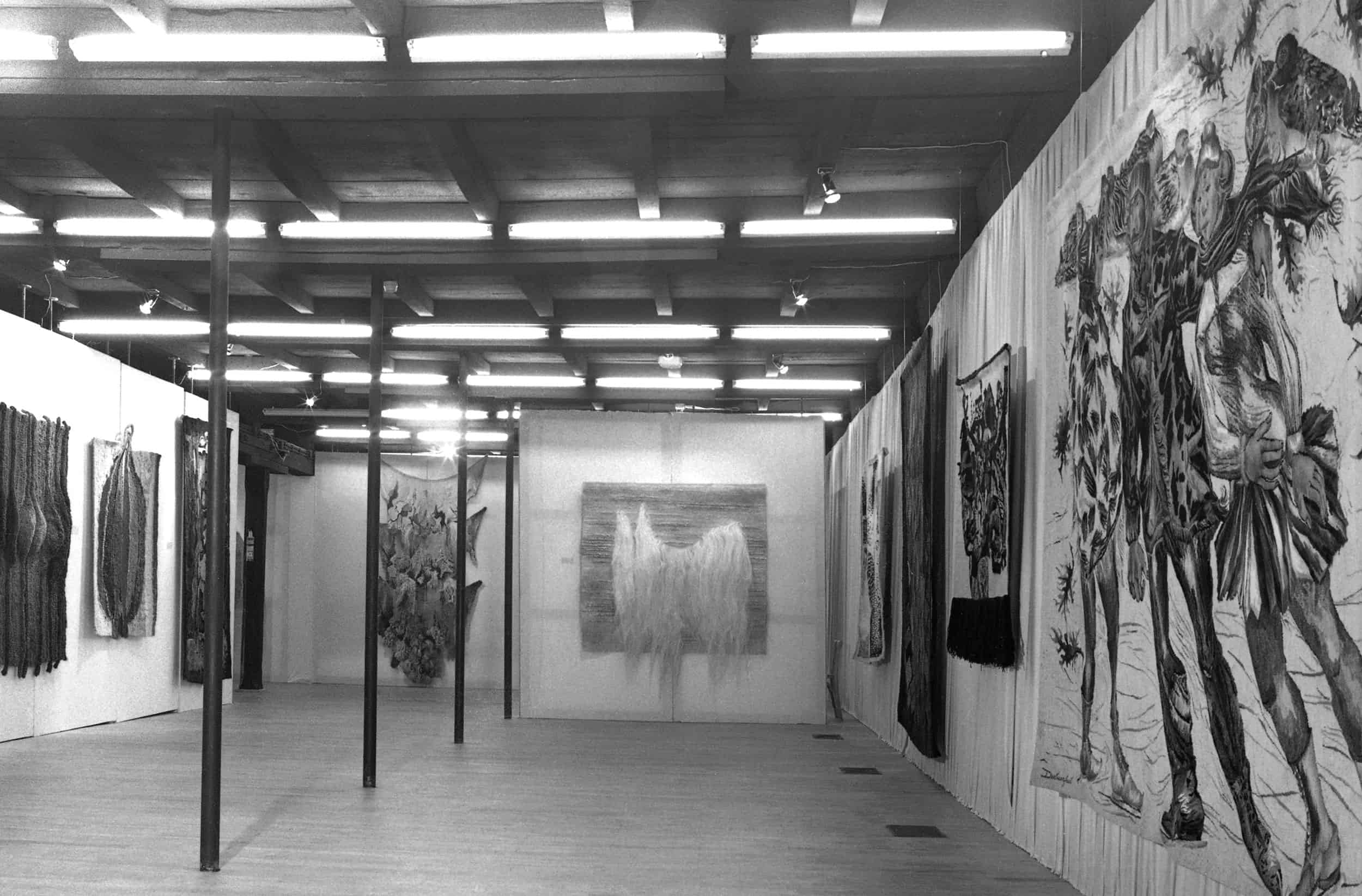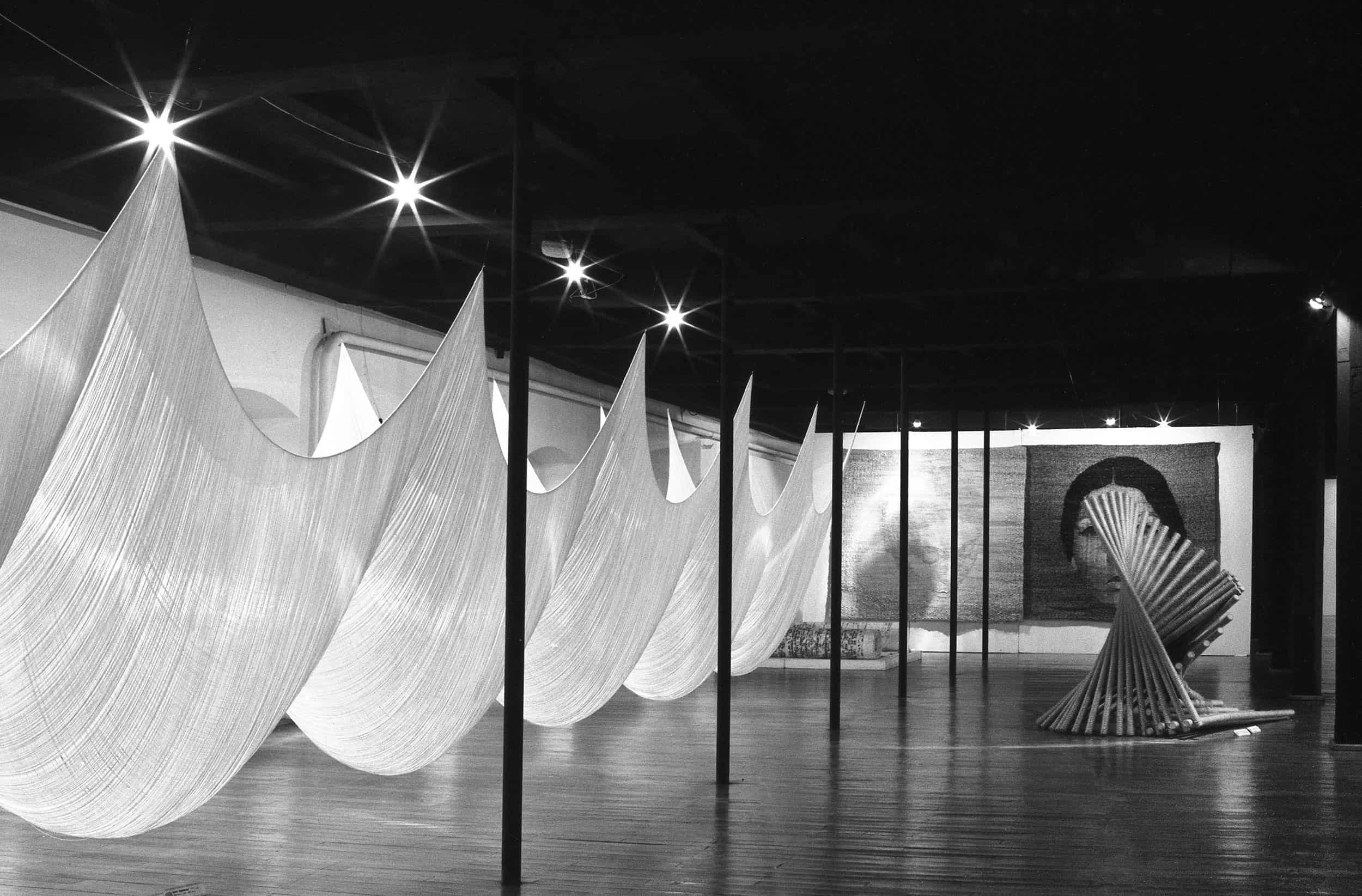The International Tapestry Triennial will take place for the 16th time at the Central Museum of Textiles in Łódź in 2019. It is the oldest and the most important presentation of phenomena connected with the medium of textiles. On this occasion, we are talking to the chief curator of the festival Marta Kowalewska about the beginnings of the festival and the directions in which textile art could develop. The organisers invite all authors who express themselves through the medium of textiles. The Jury will choose the Laureates of the Competition from among the participants whose works will be presented. For the first time, the whole presentation will be focused around a key theme ‘Breaching Borders.’
Marta Kowalewska, photo: N.Piwowarczyk
Dobromiła Błaszczyk: The concept of textile is constantly taking on new meanings. Could you tell us what is the common understanding of textile these days? How could we define the textile arts?
Marta Kowalewska: The interest in textile arts was renewed in the second half of the 20th century. At that time new means of expression with the use of fabrics were actively searched and new meanings were assigned to created works. The whole process was popularised mainly thanks to the International Tapestry Biennials held in the city of Lausanne. The exhibitions in Lausanne were not, however, the only places where decorative tapestries could have been admired. It was not long before such works started to be presented in numerous art institutions focused on the latest trends in art. Textile art was, for example, exhibited in MoMA in New York City in 1969. The popularity of this form of art dwindled again in the 1980s and 1990s. Nevertheless, for the last few years, we have been witnessing the slow rebirth or renaissance of textile arts. Starting from the 1950s artists explored new solutions within the classic textile techniques, especially by using materials which were not clearly associated with textiles before. They also looked for new formal solutions; they created spatial compositions thereby blending textiles with traditional sculpting. In recent years, however, we have been witnessing many various approaches to this medium and no clear directions in which textile art could develop can be identified. Most frequently this form of art derives inspiration from modern art and draws extensively on the richness of modern art topics. Although a certain group of artists still relies mainly on the exceptional characteristics of textile art itself, more popular approach among textile artists is to use this medium as a constituent part within the complex system of multidimensional communication by means of visual representations. Christine Macel, the curator of the 57th Venice Biennale, developed the narration of the main exhibition at Venetian Arsenal around works of artists using textiles in their work.

‘Rebellion of the matter’ exhibition, the Central Museum of Textiles in Łódź
D.B.: The event you organise also changed a lot. Before we talk about the upcoming edition and selection of artists, I would like to ask you about the early beginnings of the International Tapestry Triennial. What were the origins of this idea? What was it like working on the first edition of the Triennial at the Central Museum of Textiles in Łódź?
M.K.: The very idea of organising a festival of textile works in Łódź dates back to the 1960s. At that time Polish textile artists were really successful in Lausanne and the medium we are talking about already became the centre of attention of the international artistic community. The director of the Museum of Textile Industry History, Krystyna Kondratiuk, was the person who initiated works on a festival which could have been organised in Łódź on a regular basis and would attract international artists and audiences. Thanks to her, Polish artists enjoyed such tremendous success during the International Tapestry Biennials in Lausanne in 1962.
The first tapestry presentation in Poland took place in 1972 at the main building of Textilimpex textiles company. Already then, the organisers wished the event gained international character. Such statement of intent was even included in the exhibition catalogue. These hopes came into fruition three years later. Since 1975 the Triennial has been organised in former factory buildings, which now belong to the museum.
In the early years, applications sent by artists underwent a two-stage review process. At the first stage, artists who would be allowed to present their works at the exhibition were selected. At the second stage, the jury evaluated submitted works and awarded prizes. The event format, however, changed as early as 1975. The international nature of the Triennial mostly conditioned the change. That year we had 26 artists from abroad invited to present their works, which were not assessed by the jury at the first review stage, but rather admitted to the event by default. The third Triennial was organised in 1978 and this time the rules changed as well. We decided to benefit from the knowledge and courtesy of international experts. Since that time we had a group of commissars based abroad, selecting candidates who could participate in the event in Łódź. As the event organiser, the museum did not have any influence on the selection of artists, nor did it have any say as to the form of works submitted.
The first edition of the International Tapestry Triennial, Łódź 1975.
The fourth edition of the International Tapestry Triennial, Łódź 1981.
D.B.: The museum already organised 15 editions of the Triennial. Can you recall crucial and decisive moments in its already relatively long history? What I remember from my classes on art history is the fact that thanks to its international character, the Triennial became a stepping stone in a career of many artists.
M.K.: Indeed, the history of the Triennial spans over almost half of a century. In fact, there have been a few decisive moments which need mentioning. Firstly, the phenomenon which was very important for the Triennial as such was the attempt to combine unique tapestry with industrial textiles. This proved successful during the first three editions. As time passed, this formula lost its appeal and was not successful anymore. Indeed, the changes in the festival rules and regulations influenced the way our event was perceived by our audience and the impact it had on every person visiting us. The new event format introduced in 1978 gave ultimate power to the commissars. This deprived the Museum of control over the presented content. The following editions of the Triennial merely showed diverse preferences of our international representatives. The decision to only accept works that incorporate interlacing, which is an inherent element of every fabric, was undoubtedly very important as well. Generally speaking, it made every event participant go back to the classic definition of weaving and, as a result, we started to stand out and be different from the Biennials in Lausanne.
The Triennial became an impulse to face new challenges for a great number of artists, both avant-garde and the well-known ones, for example, Magdalena Abakanowicz. We inspired not only an enormous group of artists whose works lifted the medium we work with to the next level but also artists for whom our event was a debut on a big scale.
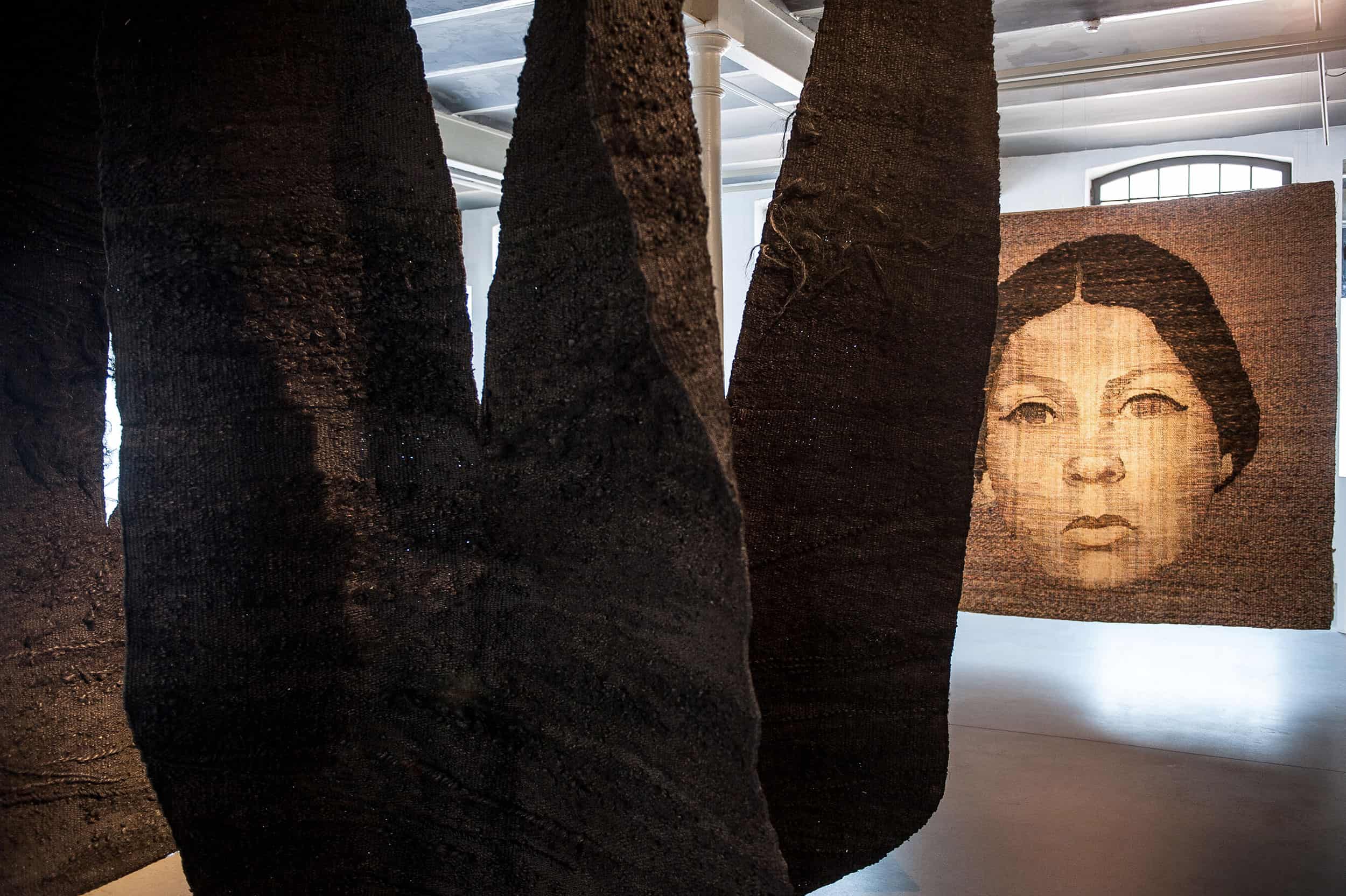
‘Rebellion of the matter’ exhibition, the Central Museum of Textiles in Łódź
D.B.: Nowadays the notion of textile is gaining new meanings and the medium of textile is being successfully combined with other disciplines. The fabric is no longer a mere tool but, most importantly, it became the means of expression for visual artists. In textile art, there seems to be no division into fine arts and functional art. Just like paints, plaster, digital recording and the human body, the fabric is treated as an equal vehicle which conveys messages that visual artists wish to communicate. This year you decided to adjust the format of your event to all these changes and latest trends by opening the Triennial to artists. Most importantly, they can send applications on their own, without the need for anyone to nominate them as the event participants. Apart from that, you depart from the traditional understanding of textile as weave fabric. Could you tell us something more about these changes? Who can become a participant of the Triennial?
M.K.: First of all, I would like to emphasise that changes in format are an inherent part of prominent and influential festivals which are aimed to present various approaches to art from all around the world. You have to be opened to changes if you wish to adjust well to constant evolution in arts. In view of that, the organisers of the Triennial in Łódź made considerable effort to develop the event format which would harmonise with the present times. We really appreciate the important role that commissars played in the past. However, we live in an era of instant and easy communication. Therefore the open format (with artists submitting works on their own) seems more suited to the needs of the international artistic community. In our opinion, the new format will allow us to present a representative sample of works which belong to the textile art category. We also believe that all our participants will become inspired with fresh ideas and approaches, and will feel an impulse to develop. Artists, graduates of art schools and groups are invited o to apply.
We acknowledge the great variety of artistic activities involving fabric in modern art, which is why we decided to accept not only works which incorporate interlacing. Fabric itself carries numerous meanings, both related to culture and social life. We have seen interesting video works and photographs, which narrate around the topics that textile artists work with. We wanted to present such works at the 16th edition of the Triennial as well.
It needs to be mentioned, however, that to make the whole exhibition more coherent and emphasise the importance of iconography, we defined the main topic of the upcoming edition. Nevertheless “Crossing borders” is a rather broad topic and we accept all possible approaches and interpretations of this motto by our event participants.

‘Rebellion of the matter’ exhibition, the Central Museum of Textiles in Łódź
D.B.: What is the deadline for sending applications?
M.K.: We had many requests by artists to extend the deadline and we decided to do so. The new deadline is 18 January 2019 (Regulation). All artists interested in participating can view the terms and conditions at the museum website. There is also the application form available, which artists can fill in and submit online.
D.B.: What will happen after such application is submitted? After the jury selects works to be presented at the Triennial, how will they become part of the event?
M.K.: In early March 2019, the members of the international jury will propose works from among all works submitted, which, in their opinion, should be presented at the main Triennial exhibition. Afterwards, at the end of March, a jury meeting will be held. After a few days of discussions, the final list of works qualified for the event will be compiled. The names of participants of the 16th International Tapestry Triennial will be publicly announced on 1 April. Their works will be displayed during the event opening on 5 October, which is when prizes awarded by the jury will be given. The Grand Prix winner will receive a medal and 10 000 Euro cash prize.
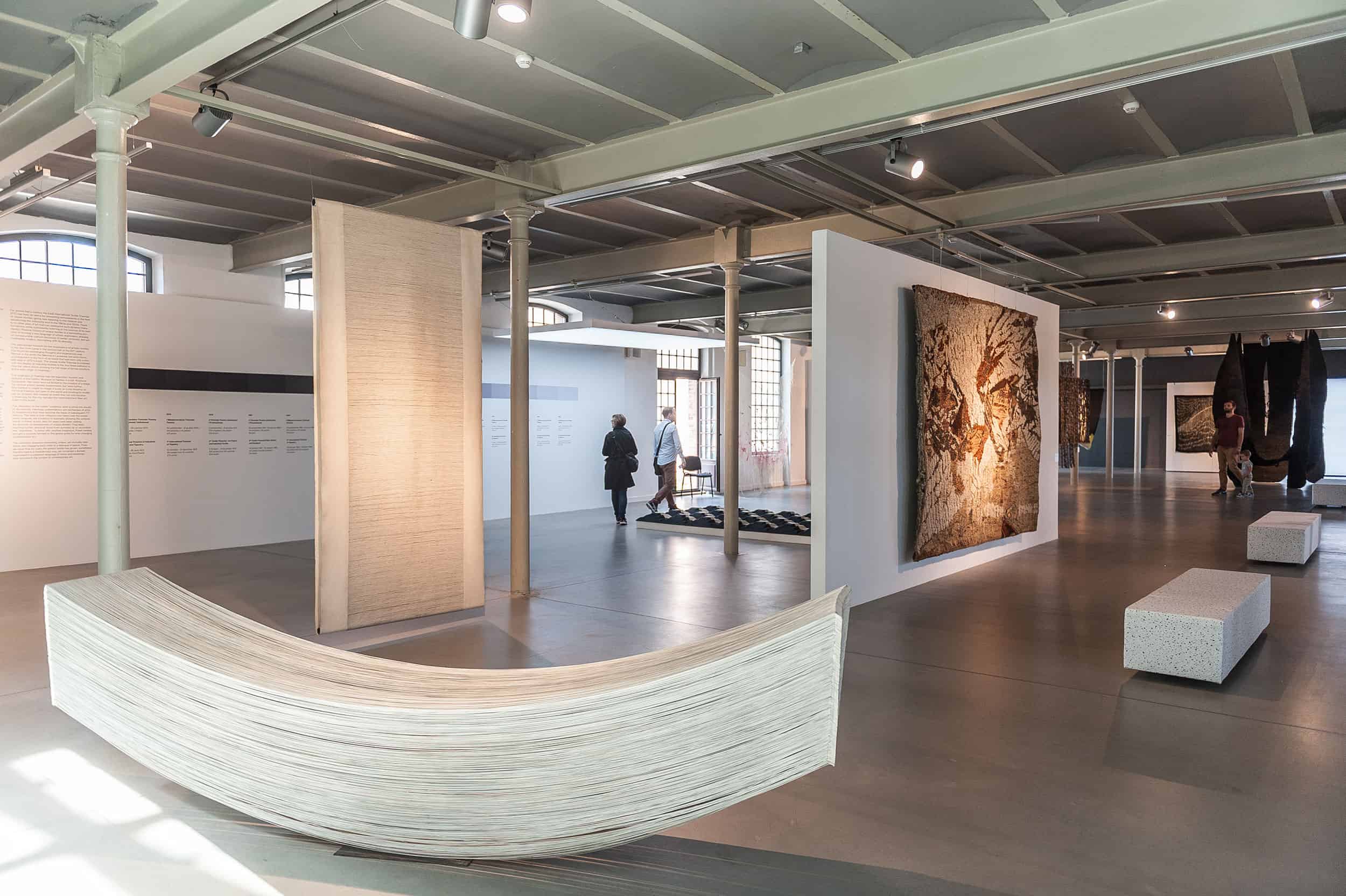
‘Rebellion of the matter’ exhibition, the Central Museum of Textiles in Łódź
D.B.: Do you have any defined expectations when it comes to submitted works? Do you want to achieve any specific goal? Or maybe you intend to show the picture of the current artistic scene/the spirit of the times? Perhaps it is not about the synthesis of the current trends in art, but rather about presenting a variety of activities and different ways of using the same technique?
M.K.: Certainly, we want to attract not only artists who use textile as a crucial means of artistic expression, but also those who use many other media but always strive to put forward important ideas and present essential issues related to contemporary reality. Especially for the second group, fabric can become a tool to potentially propel their works to another level when it comes to meanings they convey and present to the audience.
Interviewed by Dobromiła Błaszczyk
Translated by Joanna Pietrak
Edited by Contemporary Lynx

The seventh edition of the International Tapestry Triennial, Łódź 1992.



